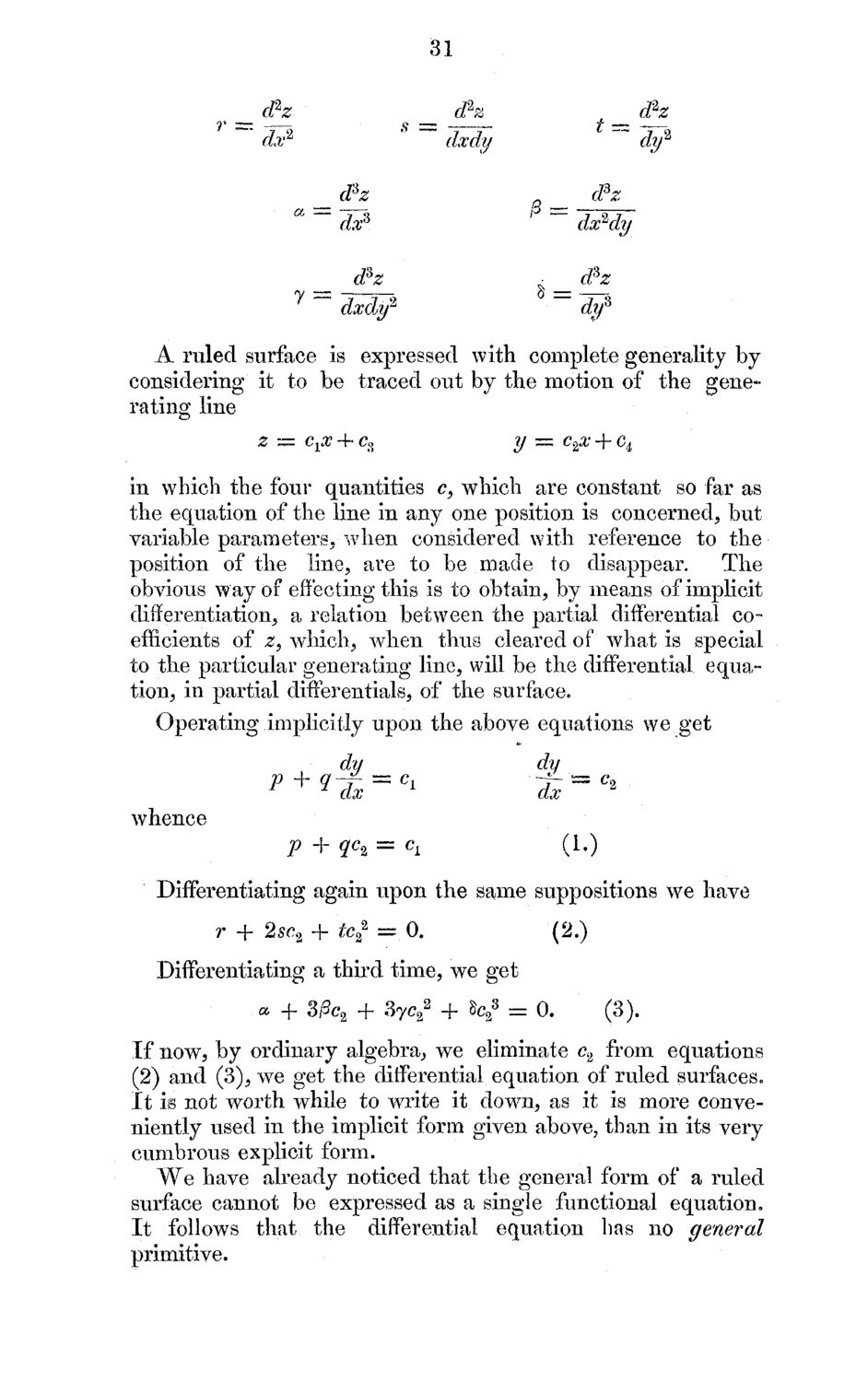| |
| |
Caption: Mathematical Models Catalog of a Collection of Models of Ruled Surfaces
This is a reduced-resolution page image for fast online browsing.

EXTRACTED TEXT FROM PAGE:
31 dh civ* * dtz dxdy o dh * ~ df d3z dx^dy <Pz a = d? <Pz ry —— • i-*Z dys dxdy2 A ruled surface is expressed with complete generality by considering it to be traced out by the motion of the generating line z = c^-f-Cg y = c%x-\-c± in which the four quantities c, which are constant so far as the equation of the line in any one position is concerned, but variable parameters, w h e n considered with reference to the position of the line, are to be m a d e to disappear. T h e obvious w a y of effecting this is to obtain, by means of implicit differentiation, a relation between the partial differential coefficients of z, which, w h e n thus cleared of what is special to the particular generating line, will be the differential equation, in partial differentials, of the surface. Operating implicitly upon the above equations w e get du whence p + qc2=z cL (1.) dij Differentiating again upon the same suppositions we have r + 2se2 + fcaa = 0. (2.) Differentiating a third time, we get a + 3/3c2 + 3yc22 + W = 0. (3). If now, by ordinary algebra, we eliminate c2 from equations (2) and (3), w e get the differential equation of ruled surfaces. It is not worth while to write it down, as it is more conveniently used in the implicit form given above, than in its very cumbrous explicit form. W e have already noticed that the general form of a ruled surface cannot be expressed as a single functional equation. It follows that the differential equation has no general primitive.
| |